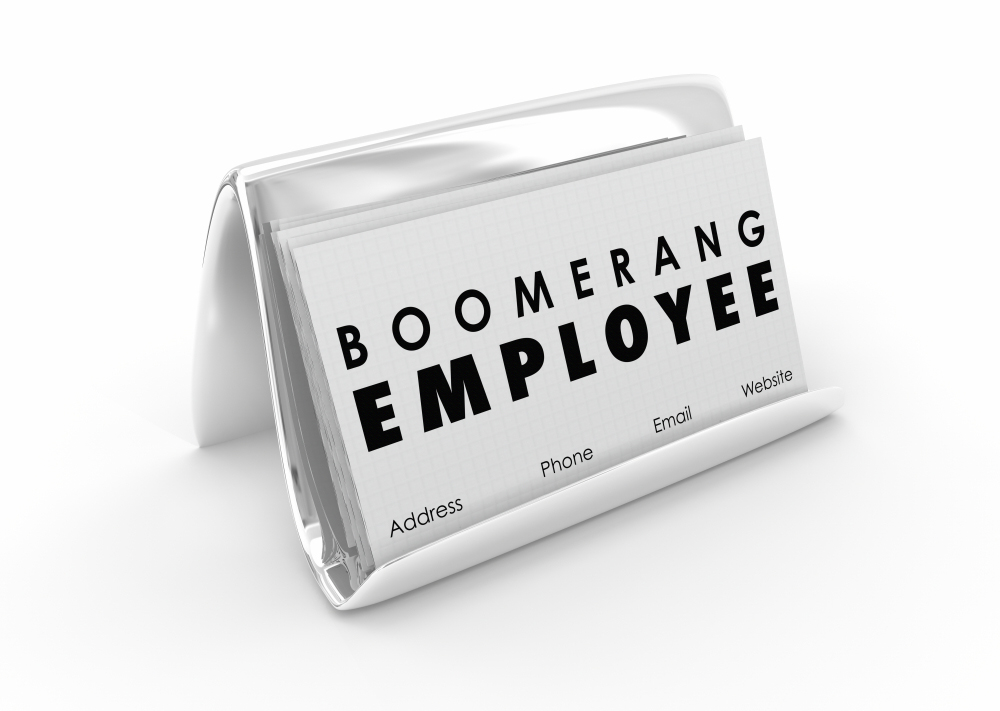The term “boomerang employee” refers to a worker who has left your company only to be rehired sometime later. We’ve discussed the pros and cons of bringing back boomerang employees in the past, but as employers seek to rehire laid-off or furloughed workers, it’s time we look at new research to solve the question once and for all: Are boomerang workers worth rehiring?
Researchers John D. Arnold (University of Missouri), Chad H. Van Iddekinge (University of Iowa), Michael C. Campion (University of Texas Rio Grande Valley), Talya N. Bauer (Portland State University), and Michael A. Campion (Purdue University) recently analyzed data on 30,714 employees at a large retail organization with locations throughout the United States who initially were hired/rehired into the management trainee position.
Their findings were included in the report “Welcome Back? Job Performance and Turnover of Boomerang Employees Compared to Internal and External Hires,” which sought to uncover why an employer would choose to rehire a former employee. The researchers say, “Although many organizations rehire former employees, only a handful of studies have examined this phenomenon.”
What’s the Answer?
The researchers examined the performance and turnover of boomerang employees rehired into management positions. They then compared this information with that of employees who were hired into the role vs. employees who were promoted into the role.
In a press release announcing the report, the researchers state that evaluations of job performance before and after being rehired reveal that boomerang managers’ performance tended to remain the same—rather than increase or decrease—after being rehired.
Furthermore, boomerang managers performed similarly to internally and externally hired managers in the first year on the job, but both internal and external hires improved more than rehires over time. Internal and external hires were also less likely to turn over from the organization than rehires. Finally, supplemental analyses indicated that boomerang managers who turned over a second time tended to do so for reasons similar to their initial turnover reasons.
“Interestingly, despite demonstrating less performance improvement and a higher propensity to turn over, boomerangs are more likely to be promoted than internal hires, and they are as likely to be promoted as external hires,” the researchers explained. “This suggests that organizations may use promotions to try to retain boomerangs, even though such employees may not be as effective as other employees over the long term. Taken as a whole, these findings call into question some of the proposed benefits of rehiring former employees.”
Take This into Consideration
This research provides some of the first comparisons between boomerang employees and the two traditional sources of employees. According to the researchers, factors organizations may want to consider before hiring a boomerang employee include:
- Reason for initial departure
- Time horizon of performance
- Availability of other types of hires
“These findings highlight the importance of detailed recordkeeping concerning reasons for initial departure,” the researchers noted. “Additionally, rehiring high performers may be especially beneficial for situations that require fast onboarding to the job or for which the average tenure is relatively short. As an example, hiring former employees may be a good approach for staffing short-term projects or for temporary work.”
While the pandemic has involuntarily created many boomerang employees, it’s worth keeping the research in mind as you seek to bring your employees back on.
The post Before We Bring Them Back, Are They Worth Rehiring? appeared first on HR Daily Advisor.
